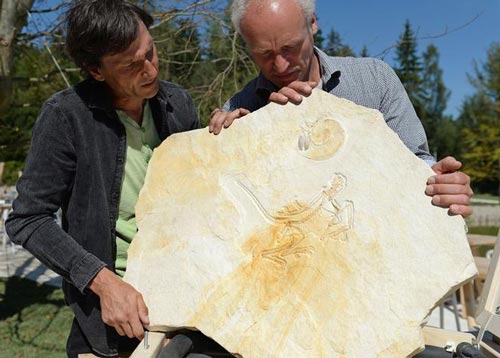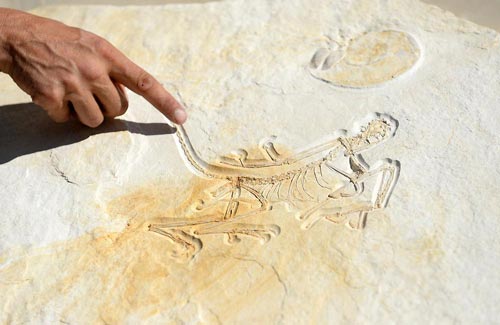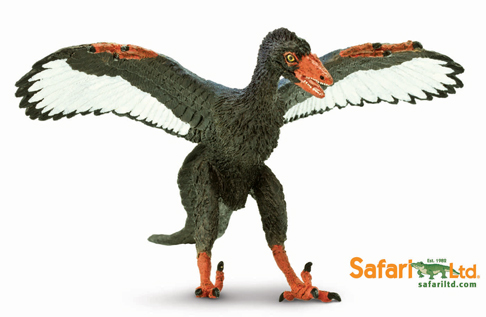New Specimen of Archaeopteryx Goes on Display
In February 2014, it was announced that a twelfth specimen of the iconic Late Jurassic “dino-bird” Archaeopteryx had been discovered. A private fossil collector was exploring a quarry near the Schamhaupten district of southern Germany (Bavaria), when a slab containing the bones of a vertebrate were unearthed. The specimen was spread over several, fragmented pieces but its significance was quickly realised and experts brought in to prepare the fossil with professionalism and care. This week, after several years of preparation the specimen has gone on display.
The Newest (and Oldest) Archaeopteryx Fossil
Picture credit: Associated Press
The fossil finder did everything correctly, filing the discovery at the district office that manages the quarry. With the specimen logged, palaeontologists were able to set about preparing the delicate fossils (which were softer than the surrounding finely grained limestone), so that the all the details that had been preserved could be revealed.
The Twelfth Archaeopteryx Specimen
Although all the fossils of this iconic Late Jurassic animal derive from the Solnhofen area of southern Germany, the twelfth specimen, the newest, is also the oldest. The strata in which this fossil was found is at least 200,000 years, possibly as much as 300,000 years, older than the rocks in which other Archaeopteryx remains have been found.
For much of the Late Jurassic, western Europe was covered by a shallow tropical sea. Small islands formed an archipelago which stretched from Portugal to France and into Germany and where the land met the water there were extensive lagoons. Some of these lagoons became cut off from the sea and also from terrestrial runoff. They remained relatively still bodies of water that gradually became more saline and anoxic (low in oxygen). These conditions meant that there were few large organisms around to scavenge any carcases should they end up in the water.
The lack of current enabled the bodies of organisms to gently become covered by the soft carbonate mud. This led to the fantastic degree of preservation seen in many of the Solnhofen fossils found today.
A Closer View of the Archaeopteryx Specimen (Note the Ammonite Fossil)
Picture credit: Associated Press
The Oldest Archaeopteryx Specimen
The picture above shows a close up view of the twelfth Archaeopteryx fossil specimen after it has been prepared. The finger in the photograph is hovering just above the long tail. Over the skull of the Archaeopteryx, the flattened fossilised remains of an ammonite can be clearly seen. The ammonite fossil has helped to date the specimen to around 153 million years ago. Palaeontologists have proposed that the presence of the ammonite suggests that the Archaeopteryx was washed out into the lagoon, perhaps in a storm, after which, it and the corpses of other animals unfortunate to have been caught out in the bad weather came to rest.
An Illustration of Archaeopteryx (A. lithographica)
Picture credit: Everything Dinosaur
The picture above shows an interpretation of Archaeopteryx, a model made by Safari Ltd and introduced in 2015, this replica is part of the Wild Safari Dinos collection, to view the models: Wild Safari Prehistoric World Figures.
The model has been given a coat of black feathers, this reflects some of the latest research into the colouration of Archaeopteryx lithographic published at the time.
To read an article that discusses the potential colour of the feathers of Archaeopteryx: Archaeopteryx “Black in Black”.
This twelfth Archaeopteryx specimen will be put on display at the new Dinosaurier-Freiluftmuseum Altmühltal in Germany.
Everything Dinosaur supplies prehistoric animal and dinosaur toys. Visit Everything Dinosaur’s user-friendly website: Everything Dinosaur.









Leave A Comment